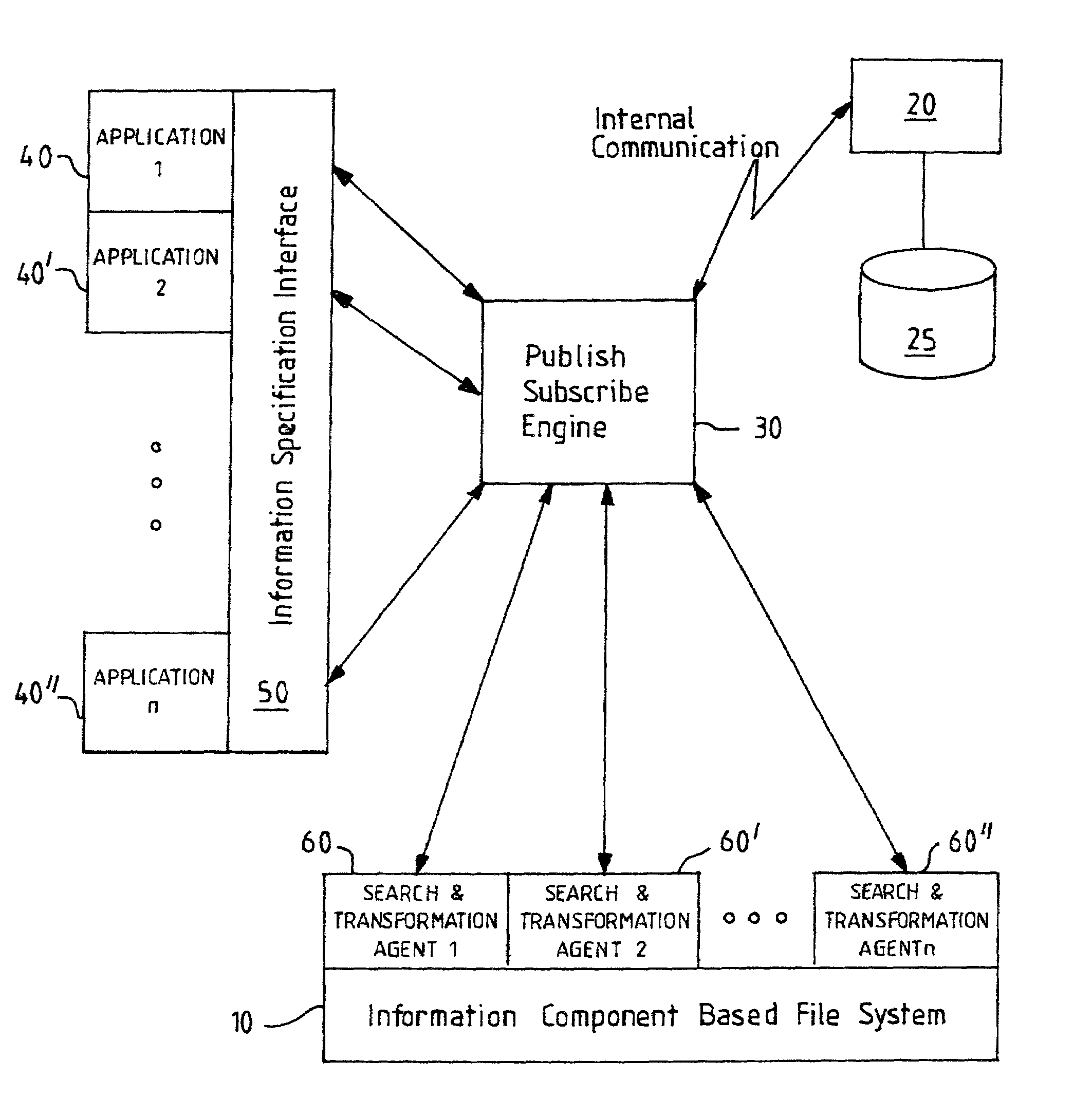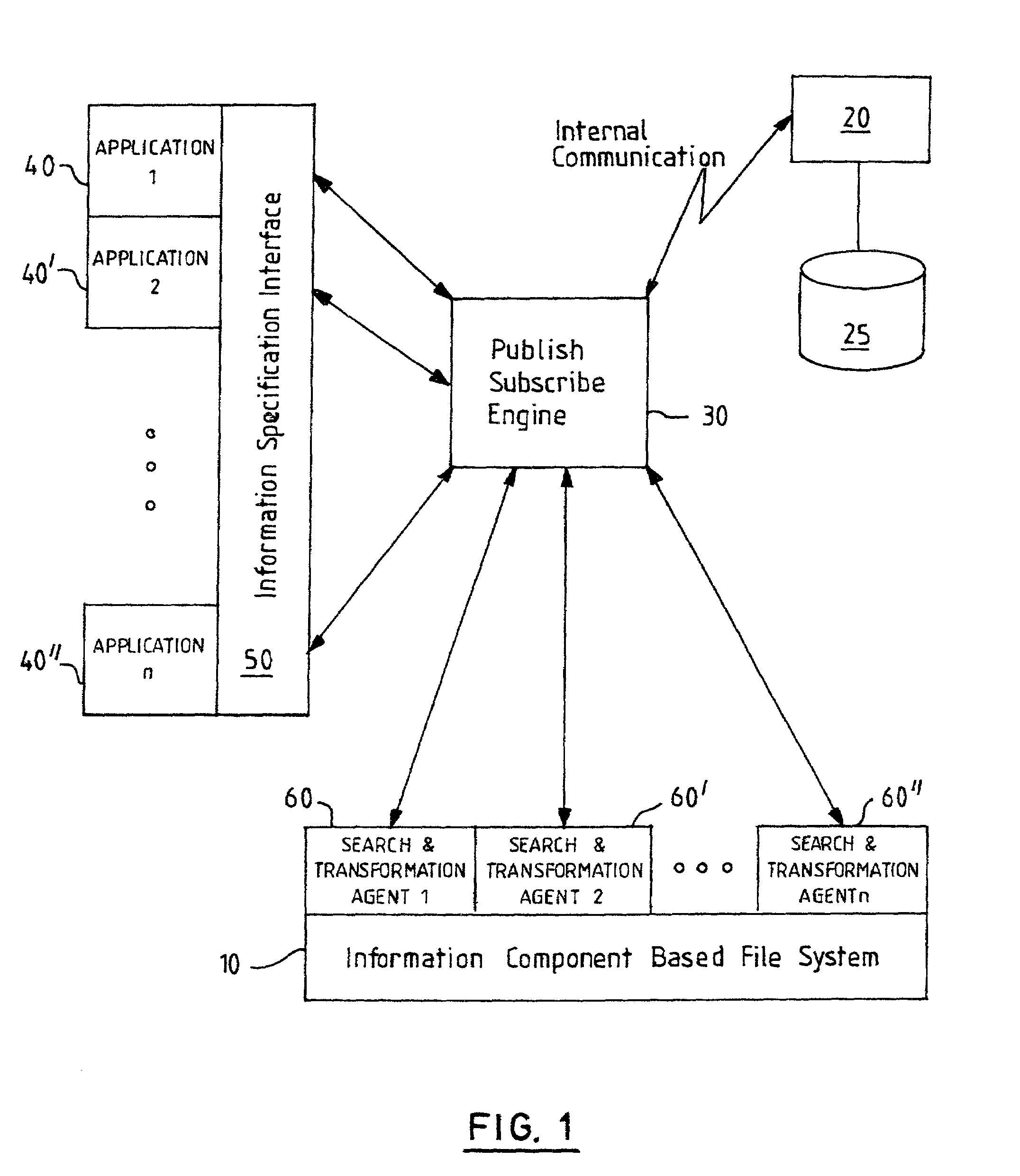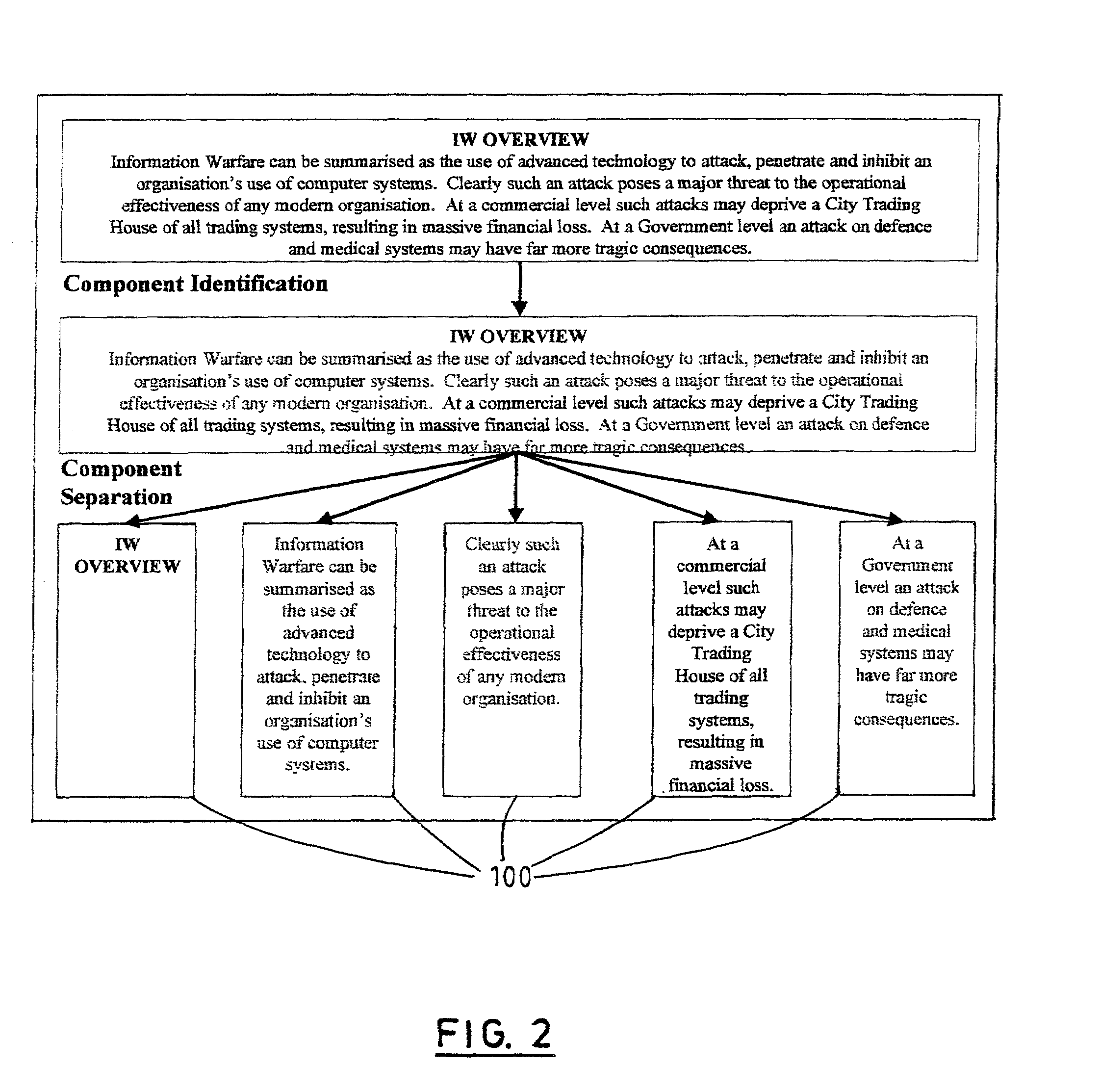Information component based data storage and management
a data storage and information component technology, applied in the field of information component based data storage and management, can solve the problems of wasting scarce storage resources, unintentional storage of replica files under different file names, and user error, so as to improve information management, reduce the amount of required storage space, and reduce the duplication of content
- Summary
- Abstract
- Description
- Claims
- Application Information
AI Technical Summary
Benefits of technology
Problems solved by technology
Method used
Image
Examples
Embodiment Construction
[0038]FIG. 1 shows a computer system architecture including an information component-based data storage system 10 (referred to hereafter as a “file system” for ease of reference). This file system 10 is implemented as an application program which performs storage and retrieval operations and which communicates with other system components, such as an operating system 20 and system storage 25, via a publish / subscribe engine 30. In alternative embodiments, the file system 10 could be implemented as an integral component of an operating system, potentially replacing conventional operating system file systems.
[0039]Communication between the file system 10 and a plurality of application programs 40 is provided via an information specification interface 50 and the publish / subscribe engine 30. Access from the publish / subscribe engine 30 to the information component-based data storage system 10 is provided via a set of search and transformation agents 60 which provide enhanced information m...
PUM
 Login to View More
Login to View More Abstract
Description
Claims
Application Information
 Login to View More
Login to View More - R&D
- Intellectual Property
- Life Sciences
- Materials
- Tech Scout
- Unparalleled Data Quality
- Higher Quality Content
- 60% Fewer Hallucinations
Browse by: Latest US Patents, China's latest patents, Technical Efficacy Thesaurus, Application Domain, Technology Topic, Popular Technical Reports.
© 2025 PatSnap. All rights reserved.Legal|Privacy policy|Modern Slavery Act Transparency Statement|Sitemap|About US| Contact US: help@patsnap.com



